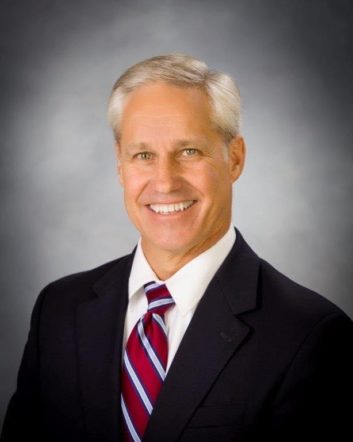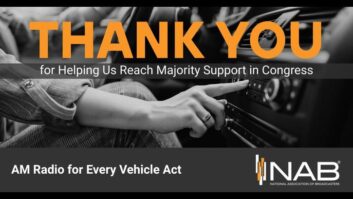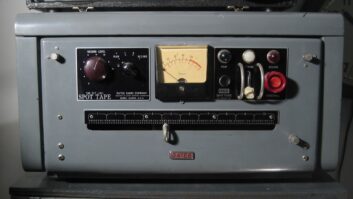 The NAB Show is approaching. To get a sense of what is on the mind of managers, we touched base with John Zimmer, owner/president of Zimmer Communications, which serves Columbia, Jefferson City and Springfield, Mo. He is also a vice chair of the NAB Radio Board. He answered our questions via email.
The NAB Show is approaching. To get a sense of what is on the mind of managers, we touched base with John Zimmer, owner/president of Zimmer Communications, which serves Columbia, Jefferson City and Springfield, Mo. He is also a vice chair of the NAB Radio Board. He answered our questions via email.
Radio World: Heading into the NAB Show, what do you consider to be the most important issue or challenge for radio broadcast owners and executives right now?
John Zimmer: Speaking for small and medium radio markets, in my opinion, the big challenges are:
- Revenue growth. Where will it come from? With declining national dollars, loss of retail base, consolidation of automotive dealers and a shift to online sales from brick-and-mortar stores.
- Audience growth — Evolving to meet the growing demand for streaming listenership and at same time maintaining our broadcasting presence in the automobile dashboard, especially in the emerging electric vehicles. I find it both peculiar and perplexing that Elon Musk (whom I am great fan of) can build rockets, send into space and land them, but his brilliant team of engineers can’t figure out how to give consumers/customers an AM radio that is free of interference in a Tesla — mindboggling, and it doesn’t pass the smell test, especially when there is still a huge audience that tunes in weekly (90%) to broadcast radio.
- Burdensome radio regulations! For example: Ever since Al Gore created the internet, it has transformed the media marketplace, yet radio broadcasters are still subject to outdated rules restricting the number and type of outlets they may own. We need to modernize the rules to reflect the realities of the local marketplace and account for the rise, and increasing influence, of digital media. Congress recognized this in the 1996 Telecommunications Act by requiring the Federal Communications Commission to review its broadcast ownership rules every four years and to repeal or modify those no longer necessary in the public interest as the result of competition.
- Recruiting and retaining top talent and human resources in all facets of local broadcast and media organization.
- Lastly, access to capital for small and medium broadcasters to invest in new innovations and products to service the audiences and advertisers in their local communities or acquisitions.
RW: What technologies or new media platforms are you watching closely for their potential impact on how radio organizations do business?
Zimmer: For local community-oriented broadcasters in small and medium markets, video and podcasting are two growth areas, especially video for high school sports.
This will be a decision for each company to determine their strategies for audience and revenue growth. Are you a pureplay audio company or evolving into a local media company with audio and video media solutions? Or will it be a different path? It’s exciting for independent owners to have the ability to experiment and not have one solution for the entire country. However, the challenge as independent owner/operators is that we don’t have the size or scalability of digital companies or big public radio companies, like NPR and iHeart, to get the same ROI off some of these investments.
Keep an eye and ear on new innovations that are encroaching on what franchises broadcasters thought they owned. For example, it’s a small thing, but this week I installed a new Ring Doorbell at my home and this week I started receiving local weather notifications from Ring Doorbell. Yikes!
Also, a bigger threat is how Spotify has begun evolving their strategies and investing heavily in content creation. They will own their own distribution platform and the content for their platform, without the burdensome regulations that broadcasters face, and with the scalability advantage of leveraging their digital investments globally versus local pureplay local broadcasters serving a local market.
RW: Over the next three years, what will be the most important change or evolution in how radio companies are run?
Zimmer: The marketplace has changed significantly with regards to media consumption, especially among the big tech streaming players and public and advertising dollar placement. I think that for the independent owner/operator, our only option for growth is to super-serve our local communities with hyper-local and free content over our airwaves, as we continue to improve our marketing toolbox of solutions to help clients get better results with their advertising investments. And/or invest in different business segments or create partnerships with local businesses within our local markets.
RW: What else will you be watching for at NAB or what else should radio managers be thinking about?
Zimmer: One thing I love is the face-to-face networking with other successful broadcasters and to learn from them. The NAB Show is great for that. Also, I love to look for solutions that can help our associates do their jobs quicker, better, faster to serve our audiences and advertisers.
Additionally, of course, the NAB is a great place to spend quality time with your engineer or IT person(s) and see the show through their eyes.
But the biggest thing for radio broadcasters is to attend and participate in our industry events. To me the knowledge and insights, the old friends you see or the new ones you make, are key to growth. It is a great place to work ON your business instead of IN your business. Your company will be better for it. And if you can’t attend, send someone from your staff.







